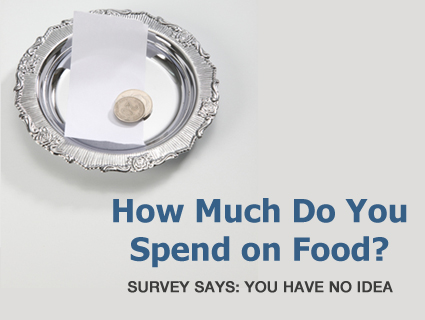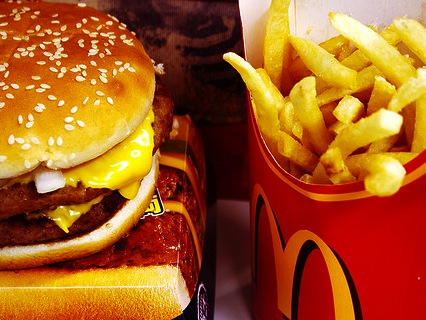We taste-tested Kraft Macaroni & Cheese, Annie’s Homegrown Macaroni & Cheese, Cheez-Its, and a simple, homemade pasta-and-cheese dish. Watch the video to see how they stacked up.
Perhaps you’ve heard about the recent outcry over the use of yellow dyes 5 and 6 in Kraft’s popular Macaroni & Cheese. A couple of food bloggers have petitioned the food giant to ditch the artificial colors, calling them “unnecessary” and “potentially harmful.”
The petition has already racked up more than 250,000 signatures. That isn’t surprising, since Kraft’s cheesy, gooey dish is a childhood staple. (I subsisted on a strict diet of it and Eggo waffles until about age 10.)
So just for fun, let’s pretend that the petitioners succeed, and Kraft replaces its artificial dyes with natural coloring—or (gasp!) no coloring at all. Would the stuff then be healthier?
Well, let’s consider the ingredients list for Kraft Macaroni & Cheese:
Enriched Macaroni product (wheat flour, niacin, ferrous sulfate [iron], thiamin mononitrate [vitamin B1], riboflavin [vitamin B2], folic acid); cheese sauce mix (whey, milkfat, milk protein concentrate, salt, sodium tripolyphosphate, contains less than 2% of citric acid, lactic acid, sodium phosphate, calcium phosphate, yellow 5, yellow 6, enzymes, cheese culture)
Now compare that to the ingredients list for Kellog’s Reduced Fat Cheez-Its:
Enriched flour (wheat flour, niacin, reduced iron, thiamin mononitrate [vitamin B1], roboflavin [vitamin B2], folic acid); soybean and palm oil with TBHQ for freshness, skim milk cheese (skim milk, whey protein, cheese cultures, salt, enzymes, annatto extract for color), salt, containst two percent or less of paprika, yeast, paprika oleoresin for color, soy lecithin
To me, the list looked pretty similar—except for one thing: Instead of yellows 5 and 6, Cheez-Its uses annato extract and paprika for color. Yes, you read that right: Cheez-Its uses natural coloring, while Kraft Macaroni & Cheese uses artificial. Indeed, agreed Jesse Jones-Smith, a nutritionist at Johns Hopkins’ Bloomberg School of Public Health, “Kraft actually has a few extra additives, even compared to Cheez-its.” She added, “If you gave a kid two servings of Cheez-its and a glass of milk, you would actually have more sodium in Kraft Mac & Cheese. Otherwise, the two meals are pretty nutritionally equivalent.”
Nutritionist Marion Nestle isn’t a fan of the stuff in the blue-and-yellow box, either. “Kraft Mac & Cheese is a delivery vehicle for salt and artificial colors and flavors,” Nestle wrote in an email. “It is a non-starter on my list because it violates at least three of my semi-facetious rules: never eat anything artificial; never eat anything with more than five ingredients; and never eat anything with an ingredient you can’t pronounce.”
Right. But that got me wondering: What about Annie’s Homegrown, the supposedly healthier brand of packaged mac and cheese? When Jones-Smith compared Annie’s and Kraft’s nutritional information labels and ingredients lists, she found that their dry pasta and sauce packets weren’t too different:*

The real difference, she says, was in what the two manufacturers recommended adding: Kraft suggests making the dish with four tablespoons of margarine and a quarter cup of two-percent milk, while Annie’s recommends two tablespoons of butter and 3 tablespoons of lowfat milk. “Margarine often has trans fat—why would they recommend margarine?” wondered Jones-Smith. The result is that when prepared, Kraft packs substantially more calories and fat into a serving than Annie’s:

So what’s a healthier alternative? I asked Tamar Adler, author of An Everlasting Meal: Cooking With Economy and Grace, for a recommendation. She suggested a simple cheese, pasta, and cauliflower dish. Basically you mash up two cups of boiled cauliflower with a cup of parmesan, a little olive oil, and salt and pepper. Add it to a pound of pasta with a little of the pasta’s cooking water, and you have a creamy, cheesy dish that Jones-Smith says is also more nutritious than both boxed versions: It’s lower in sodium, fat, and calories, and slightly higher in protein. (It’s slightly higher in saturated fat because of the real parmesan.)
It also tastes good. That’s not to say that boxed mac and cheese tastes bad; it’s hard to go wrong with cheesy, starchy comfort food. But I’m willing to guess that Adler’s concoction is a few more steps removed from a bowl of Cheez-Its. Which is, well, comforting in its own way.
You can watch our taste test in the video at the top of this post.
Correction: An earlier version of this article misstated some of the values for Cheez-Its’ nutritional information.













